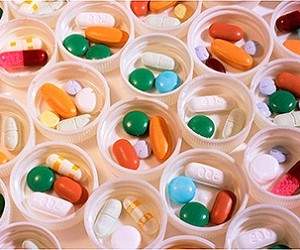 Mark Mendelson (Professor, Department of infectious diseases, University of Cape town) told the whole truth about antibiotics.
Mark Mendelson (Professor, Department of infectious diseases, University of Cape town) told the whole truth about antibiotics.
By 2050 the number of people dying from antibiotic-resistant infections could rise to 10 million people
Today the world community is concerned about the crisis in global public health, provoked by the resistance of some germs to antibiotics. If antibiotics have to give up modern medicine, in the usual sense, will be threatened.
Last year, the world health organization (who) conducted a special survey in several countries to find out how local people aware of issues of antibiotic resistance. The study found several misconceptions about this problem. Consider some of them.
1. Antibiotic resistance does not arise, if they are correctly taken
Not true.
Antibiotic resistance is explained by Darwinian natural selection. For thousands of years the bacteria had to protect themselves from chemicals produced by other bacteria and fungi with a view to their destruction. When in 1928 Alexander Fleming discovered penicillin, we started to use these substances as antibiotics.
Bacteria that can resist these substances, the survival advantage, so they can withstand the attack of the antibiotic. Some are sensitive to the antibiotic bacteria can absorb genes for resistance from other bacteria, which also makes them sustainable. Whenever we use an antibiotic, it kills all bacteria that do not have the mechanism of resistance – that is, those that are sensitive to its effects. Resistant bacteria remain in place.
How would you correctly did not use the antibiotic, it may still encounter resistance.
2. Resistant to antibiotics become our body
No, not true, the bacterium becomes resistant, not the human body. There is nothing that we could change in your body and to thereby overcome the resistance of bacteria to antibiotics.
3. Antibiotics are the cure for the common cold and flu
Not true.
Antibiotics work only against bacteria. Colds and flu are caused by viruses against which antibiotics have no effect. The more we use antibiotics, the more resistant bacteria are a natural selection, while increasing their population.
The overuse and abuse of antibiotics in viral infections is one of the main engines of growth of antibiotic resistance worldwide. All you will achieve by taking antibiotics for colds is:
– inflict self-harm because of the side effects of antibiotic;
– harm yourself, your family, friends and society that will contribute to the increase of resistance.
4. If I feel better, you can stop using the antibiotic
Not true.
But there is a caveat. If you use the wrong antibiotic, for example, against viral infection, the sooner to stop this treatment, the better.
But if you have a bacterial infection which is treatable with antibiotics, it is vital to go through the whole prescribed course. Usually, the patient’s condition improves before you are killed all of the bacteria.
If you interrupt the course of antibiotics prematurely or will make it in insufficient doses, number of antibiotic to destroy bacteria is insufficient, and it will still be able to reproduce. Moreover, if not enough of the antibiotic, the bacteria easier to become sustainable. So always complete the course of treatment and not stop just because you feel better.
5. Can I take antibiotic residues from friends or relatives
Wrong.
Never use antibiotics left over from previous treatment, or borrowed from relatives/friends. Take only those antibiotics that are prescribed by a doctor or nurse. This is because of two reasons:
– if antibiotics are stitched, the likelihood that they will cause the resistance increases as the active ingredient can be alleviated;
– antibiotics from other people can be the wrong choice. There are many different types of antibiotics used to treat a variety of infections. Accordingly, your infection can be treated properly. It also increases the likelihood that the bacteria will become resistant.
6. Resistance occurs only after repeated courses of antibiotics
Not true.
Antibiotic resistance can occur every time you take an antibiotic, regardless of whether the course unit or you have repeated it several times. The more courses you take, the greater resistance may occur. But this does not mean that stability is not found at the first course.
Moreover, one course of antibiotics can provoke life-threatening side effects and potentially catastrophic changes in the normal bacteria of the human gut. Imbalance can lead to the prevalence of dangerous bacteria such as Clostridium difficile and, as a result, severe diarrhea.
7. Blame the medicine
In fairness I must say that the medical profession has failed in working with the General public. We need to do a lot more training and raise public awareness about the problem of antibiotic resistance and appropriate antibiotic use.
But the truth is that this applies to all. Sometimes doctors and nurses there is strong pressure to prescribe an antibiotic. The correct approach to the treatment sometimes is violated due to uncertainty or lack of knowledge and/or lack of space to provide medical care and diagnosis. Pressure patients require to prescribe an antibiotic, only exacerbates the problem.








